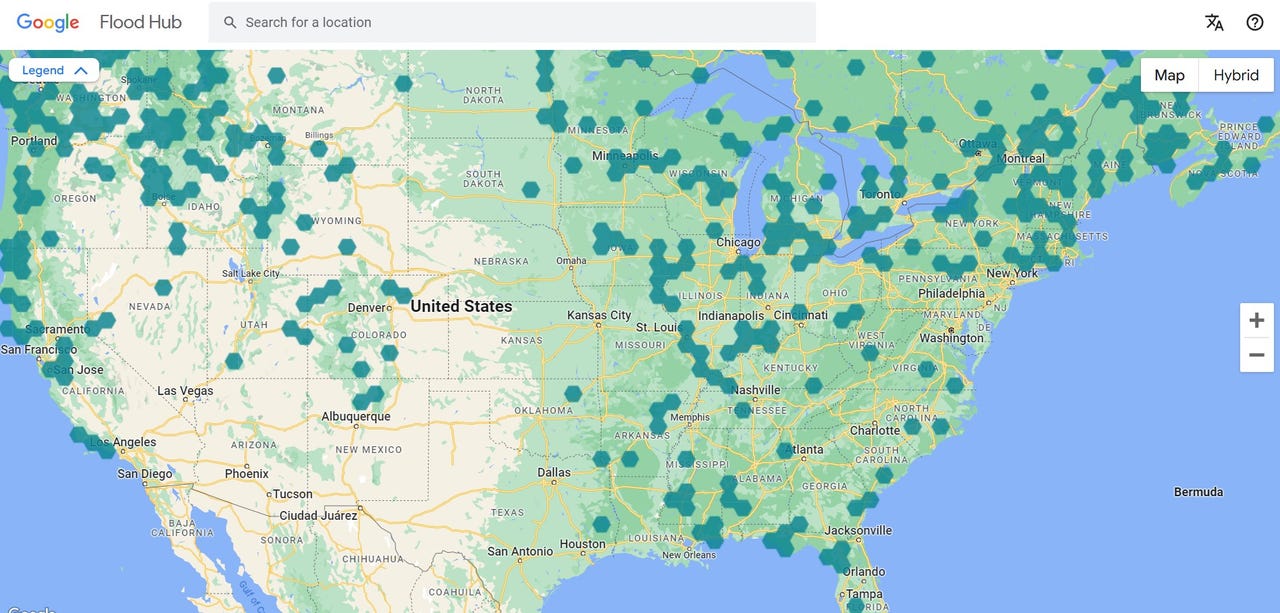































 Google
Google Google has announced a number of new initiatives -- two in the area of severe weather and two in the area of traffic -- but all in the name of sustainability and safety.
Also: Everything you need to prepare for severe weather
While most of these programs are aimed at local governments and humanitarian organizations, they have plenty of uses for individuals, too. And if these programs do what Google hopes, they'll not only make life on Earth a little healthier, but they'll actually save lives.
Since 2018, Google has been using an AI-powered flood forecasting tool to predict local flooding. The tool processes publicly available data and sends out warnings to local governments and aid organizations up to seven days before a flooding event occurs.
Flood Hub currently covers more than 80 countries around the world, providing forecasting to nearly 2,000 sites. And today, it's available in the United States, adding more than 800 locations along rivers.
Also: Google is making passkeys the default login option for all personal accounts
In another effort, Google is partnering with the US Forest Service to provide the biggest update to the USFS fire spread model in 50 years. Using satellite imagery and AI, the company can predict in near real-time (within 15 minutes) how quickly and where a wildfire will spread.
If you're tired of sitting at red lights, Google gets it. And it wants to help. With Project Greenlight, Google uses AI to help city engineers optimize traffic lights so that traffic at intersections flows as quickly as possible, cutting down on emissions in those spots.
Also: This portable battery station can power your home for 2 weeks, and it's$330 off this October Prime Day
Starting today, Project Greenlight is available in 12 cities around the globe -- Abu Dhabi, Bali, Bangalore, Budapest, Haifa, Hamburg, Hyderabad, Jakarta, Kolkata, Manchester, Rio de Janeiro and Seattle -- with more to come. The plan, Google says, is to reduce traffic stoppages by 30% and emissions by 10%.
Google is also bringing fuel-efficient routing to a wider Google Maps audience. With this routing, not only can you search for roads that have charging stations, but you can also access a highly customized route that considers hills, traffic, and speed limit. Since launching this program, Google says, 2.4 million metric tons of CO2e emissions has been saved, or approximately one year of driving for 500,000 fuel-based cars.
 Etiquetas calientes:
innovación
Etiquetas calientes:
innovación